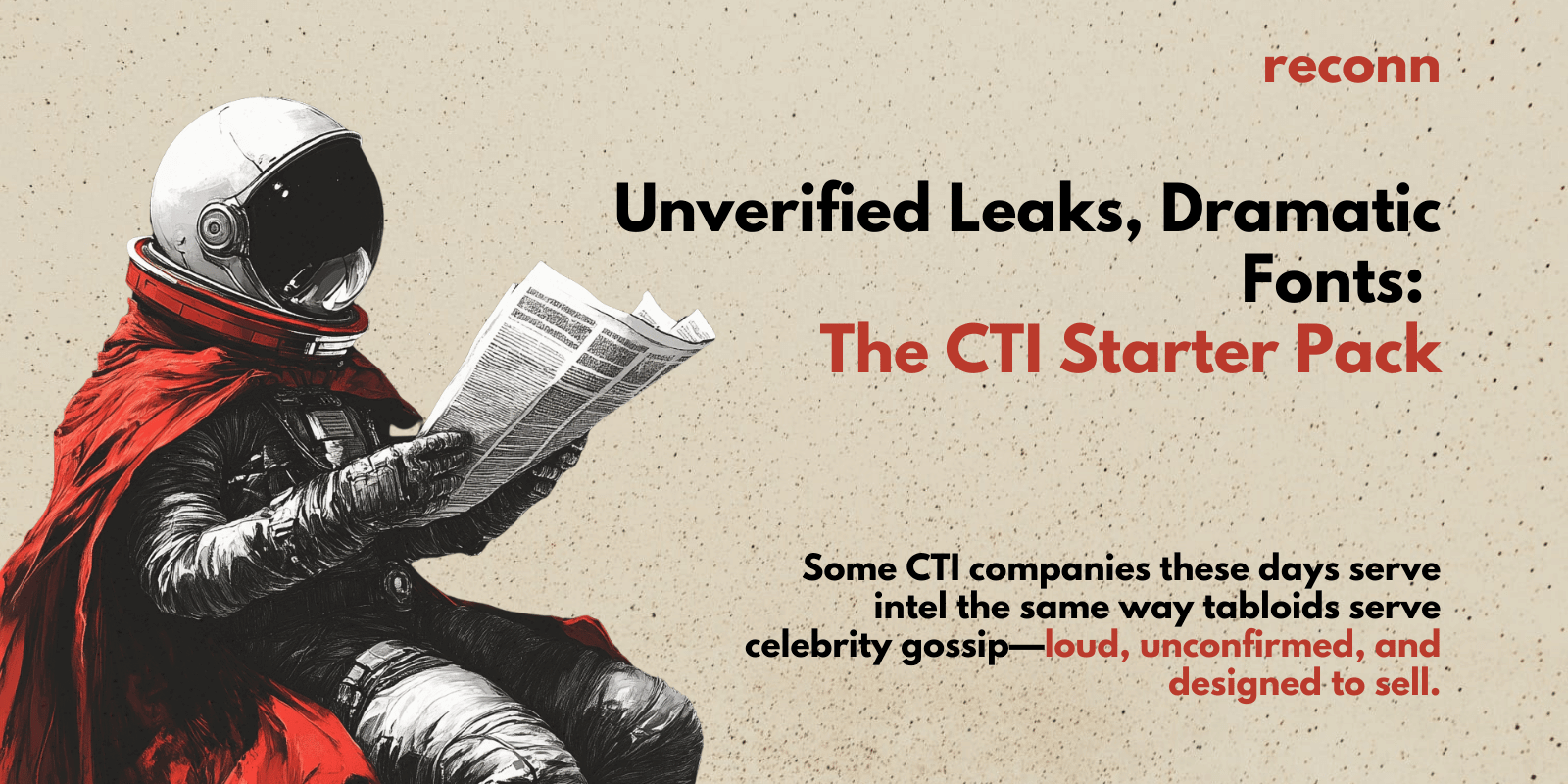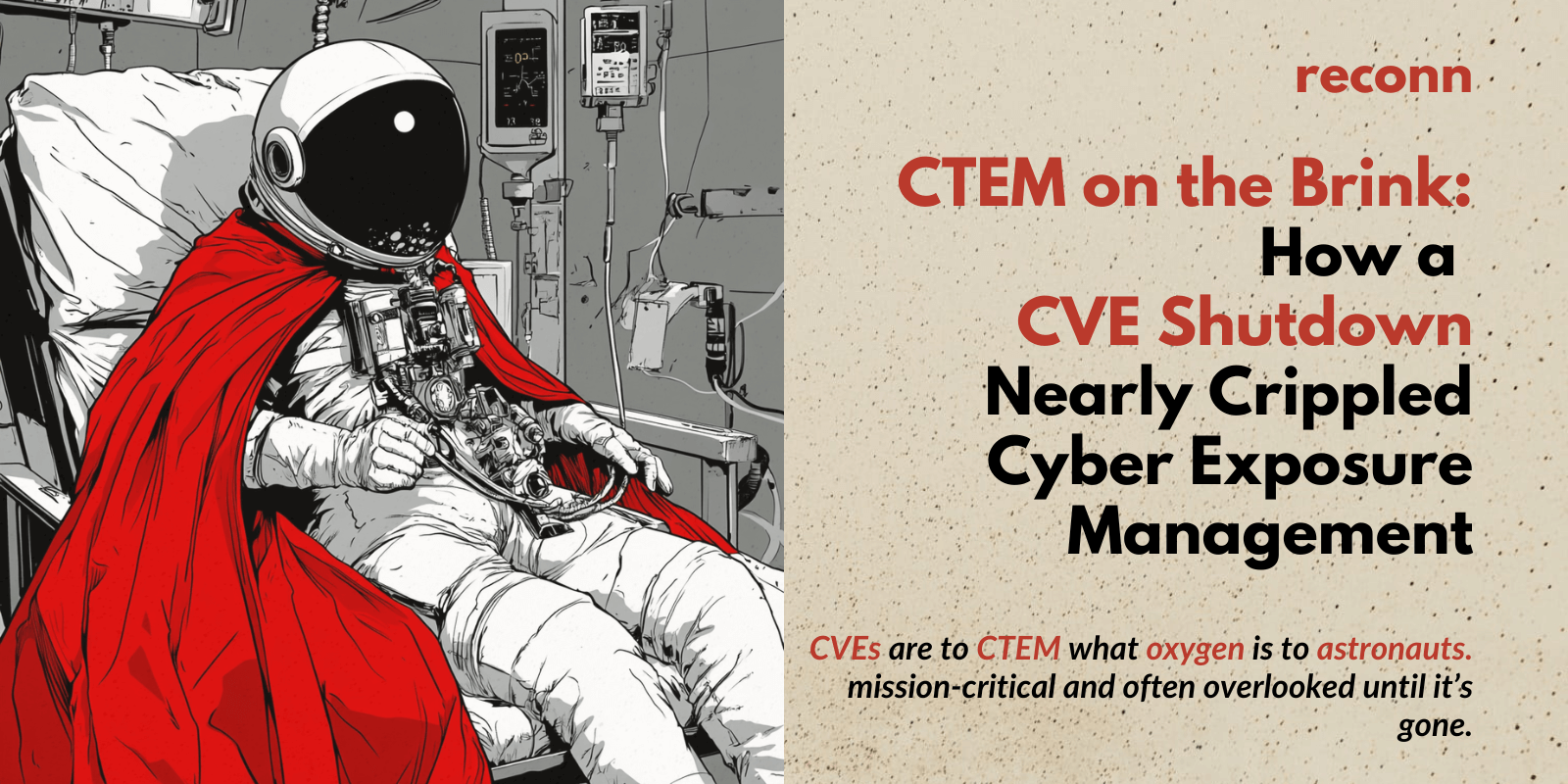Let me get this off my chest.
Every time I open LinkedIn, it feels like a never-ending parade of CTI vendors screaming about some ‘dark web finding’ they just discovered. But wait—where’s the actual report? The TTPs? The IOCs? The attribution? The analysis?
Nowhere.
Because apparently, the moment leaked data hits the dark web, it becomes too “confidential” to publish. How convenient. One second it’s a public leak on a Telegram channel with 4,000 members, and the next it’s suddenly behind a “schedule a demo” paywall with no context and 5 slides of fear-mongering.
It’s gotten to the point where I swear—it’s easier to launch a CTI SaaS startup than it is to get a permit for a food cart selling shawarma with Cheez Whiz.
The bar is so low that having access to a dark web scraper and a Canva account qualifies you as a “threat intelligence company.” You don’t need tradecraft. You just need drama, dark colors, and a scary-looking logo.
We’re not building intelligence—we’re building tabloid dashboards.
Modern CTI reports read like evening tabloids—complete with dramatic fonts, zero verification, and click-hungry headlines. They’re not built to inform. They’re built to impress unsuspecting CISOs in 30-second sales calls.
The fonts scream urgency. The logos scream nation-state. And the content? Usually recycled, unverified, and desperately trying to be the next ‘exclusive alert’.
Table of Contents
Let’s Start with the Basics: What Even Is Intelligence?
If you’ve spent more than 5 minutes in the intelligence world, you’ve probably heard of the DIKW Pyramid—a framework that complements models like the Pyramid of Pain by showing how raw data matures into actionable intelligence:
Data – Raw, unprocessed facts. Think IP addresses, file hashes, domain names.
Information – Processed data. Example: This IP is hosting a C2 server linked to a known malware campaign.
Knowledge – Contextualized information. Tied to tactics, attribution, behavior, motive.
Wisdom (Intelligence) – Actionable insights. You know the who, why, how, and what to do about it.
Most of what today’s “CTI influencers” are sharing barely qualifies as information. It’s raw, recycled, and wrapped in marketing fluff.
Honeypots Aren’t CTI. Scraping Pastebin Isn’t CTI. Dark Web PDFs? Please.
There’s nothing wrong with collecting threat data. Honeypots, darknet monitoring, leaked credential scrapes—they all have value. But let’s call it what it is: data collection, not intelligence.
True CTI is a process built on four foundational stages:
Collection – From multiple, diverse sources.
Processing – Cleaning, deduplication, normalization.
Analysis – Finding patterns, understanding motives.
Dissemination – Delivering actionable insights, tailored to the consumer.
If your so-called CTI stops at Step 1, it’s just raw feeds dressed up in spooky fonts and sold like breaking news.
Evening Gossip Tabloids and the CTI Wannabes
Remember those evening gossip tabloids? The ones with wild headlines about alien babies, celebrity meltdowns, and scandals that never actually happened? You’d grab them at the supermarket checkout line just to laugh, roll your eyes, or secretly enjoy the absurdity. They thrived on drama, not facts. On virality, not verification.
That’s exactly what many modern CTI startups are trying to emulate—but with hoodies and dark themes instead of paparazzi photos.
These so-called “threat intelligence” companies are often nothing more than groups of silly script kiddies operating from some tier-3 town, dreaming of ruling the cyber world one leaked password at a time. Most of them have:
Zero historical understanding of major cybercrime ecosystems.
No concept of verification, vetting, or validation.
No attribution experience.
No clue what TTP even stands for.
What they do have is access to:
Telegram groups filled with recycled data.
Python scripts they barely understand.
Dark web scrapers that spit out junk faster than they can spell CVE.
They wrap it all in spooky infographics, give it a cool APT codename, and boom—another “exclusive threat report” that’s basically recycled noise with no context, no actionability, and no value.
Let’s stop glorifying the digital tabloid press. Intelligence isn’t about what you find—it’s about what you understand, and how you apply it.
Script Kiddies with Tor Browsers
Most of today’s “dark web experts” are just script kiddies. Their OPSEC is laughable. Their tools are GitHub copies. They resell compromised ChatGPT logins and run scams-as-a-service.
But sure, let’s put their names into dashboards and treat them like APTs.
When the neighborhood gossip uncle knows more about ‘who’s behind what’ than your CTI platform, we’ve got a problem. Just because something appears on the dark web doesn’t mean it has strategic value. Most of it is noise, recycled leaks, or amateur chatter.
The Sacred Art of Attribution
Vendors avoid attribution like the plague. Why? Because it’s hard. It requires:
TTP analysis
Infrastructure patterns
Language/time zone profiling
Malware lineage
Motivation context
Attribution gives intelligence meaning. Without it, you’re just throwing around buzzwords. Saying “moderate confidence” after a wild guess doesn’t cut it.
I trust my building’s watchman’s instinct on suspicious activity more than your ‘moderate confidence’ attribution.
IOC vs IOA: Know the Difference
IOCs (Indicators of Compromise) – IPs, hashes, domains. Good for blocking known threats.
IOAs (Indicators of Attack) – Behaviors, patterns, tactics. Useful for detecting evolving threats.
Over-reliance on IOCs is like using expired antibiotics. It might make you feel better, but it’s not solving the actual problem.
MTTD, MTTR, and Other Metrics That Miss the Point
Metrics like MTTD (Mean Time to Detect) and MTTR (Mean Time to Respond) are great for SOCs and IR teams. But in CTI?
They rarely make sense.
Threat intelligence isn’t about how fast you detected something. It’s about how early you understood the threat before it became a problem. It’s about context, foresight, and being proactive.
If only CTI vendors verified threats the way my watchman verifies visitors—we’d be in a much safer cyber world.
Final Words (Before I Go Find Something new to rant upon)
Just because you found something doesn’t mean it’s intelligence. Just because it’s scary doesn’t mean it’s useful. Just because it’s on the dark web doesn’t mean it’s impactful.
CTI isn’t a buzzword or a product SKU. It’s a discipline. And it’s about time we stop treating it like clickbait.
To those doing it right: keep going. To the rest: either learn the tradecraft or stay out of the way.

Stay Ahead or Stay Hacked: The CTEM Advantage
Cyber threats don’t wait, so why should you? reconn’s Continuous Threat Exposure Management (CTEM) keeps you ahead with:
EASM – Find what’s exposed before attackers do.
RBVM – Fix what actually matters, not just what’s loud.
ASPM – Secure apps at every stage, not just before release.
CSPM – Cloud misconfigs? Not on our watch.
PTaaS – Real-world attack simulations, on demand.


